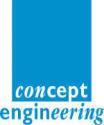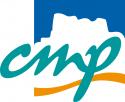UB05 Session 5
Date: Wednesday 29 March 2017
Time: 10:00 - 12:00
Location / Room: Booth 1, Exhibition Area
| Label | Presentation Title Authors |
|---|---|
| UB05.1 | NOXIM-XT: A BIT-ACCURATE POWER ESTIMATION SIMULATOR FOR NOCS Presenter: Pierre Bomel, Université de Bretagne Sud, FR Authors: André Rossi1, Johann Laurent2 and Erwan Moreac2 1LERIA, Université d'Angers, Angers, France, FR; 2Lab-STICC, Université de Bretagne Sud, Lorient, FR Abstract We have developped an enhanced version of Noxim (Noxim-XT) to estimate the energy consumption of a NoC in a SOC. Noxim-XT is used in a two-step methodology. First, applications are mapped on a SoC and their traffics are extracted by simulation with MPSOcBench. Second, Noxim-XT tests various hardware configurations of the NoC, and for each configuration, the application's traffic is re-injected and replayed, an accurate performance and power breakdown is provided, and the user can choose different data coding strategies. With the help of Noxim XT, each configuration is bit-accurately estimated in terms of energy consumption. After simulation, a spatial mapping of the energy consumption is provided and highlights the hot-spots. Moreover, the new coding strategies allows significant energy saving. Noxim XT simulations and a FPGA-based prototype of a new coding strategy will be demonstrated at the U-booth to illustrate these works. More information ... |
| UB05.2 | RIMEDIO: WHEELCHAIR MOUNTED ROBOTIC ARM DEMONSTRATOR FOR PEOPLE WITH MOTOR SKILLS IMPAIRMENTS Presenter: Alessandro Palla, University of Pisa, IT Authors: Gabriele Meoni and Luca Fanucci, University of Pisa, IT Abstract People with reduced mobility experiment many issues in the interaction with the indoor and outdoor environment because of their disability. For those users even the simplest action might be a hard/impossible task to perform without the assistance of an external aid. We propose a simple and lightweight wheelchair mounted robotic arm with the focus on the human-machine interface that has to be simple and accessible for users with different kind of disabilities. The robotic arm is equipped with a 5 MP camera, force and proximity sensors and a 6 axis Inertial Measurement Unit on the end-effector that can be controlled using an app running on a tablet. When the user selects the object to reach (for instance a button) on the tablet screen, the arm autonomously carries out the task, using the camera image and the sensors measurements for autonomous navigation. The demonstrator consists in the robotic arm prototype, the Android tablet and a personal computer for arm setup and configuration. More information ... |
| UB05.3 | NNDNN: NEURAL NETWORKS DESIGNING NEURAL NETWORKS Presenter: Brett Meyer, McGill University, US Authors: Warren Gross, Sean Smithson, Ossama Ahmed and Guang Yang, McGill University, US Abstract Modern artificial neural networks currently achieve state-of-the-art results in various difficult problems, including image classification and speech recognition. However, both the performance and computational complexity of such models are heavily dependent on the design of characteristic hyper-parameters (e.g., numbers of hidden layers or nodes per layer) which are often manually optimized. With neural networks penetrating low-power mobile and embedded areas, the need now arises to optimize not only for performance, but also for implementation cost. In our work, we present a multi-objective design space exploration method leveraging machine learning based response surface modelling to reduce the number of solutions trained and evaluated. Experimental results are presented for several image recognition datasets, demonstrating the evolution of the approximated Pareto-optimal hyper-parameters and corresponding GPU code; all while exploring only a small fraction of the design space. More information ... |
| UB05.4 | MATISSE: A TARGET-AWARE COMPILER TO TRANSLATE MATLAB INTO C AND OPENCL Presenter: Luís Reis, University of Porto, PT Authors: João Bispo and João Cardoso, University of Porto / INESC-TEC, PT Abstract Many engineering, scientific and finance algorithms are prototyped and validated in array languages, such as MATLAB, before being converted to other languages such as C for use in production. As such, there has been substantial effort to develop compilers to perform this translation automatically. Alternative types of computation devices, such as GPGPUs and FPGAs, are becoming increasingly more popular, so it becomes critical to develop compilers that target these architectures. We have adapted MATISSE, our MATLAB-compatible compiler framework, to generate C and OpenCL code for these platforms. In this demonstration, we will show how our compiler works and what its capabilities are. We will also describe the main challenges of efficient code generation from MATLAB and how to overcome them. More information ... |
| UB05.5 | SCCHARTS: SYNCHRONOUS STATECHARTS FOR SAFETY-CRITICAL APPLICATIONS Presenter: Reinhard von Hanxleden, Kiel University, DE Authors: Michael Mendler1, Christian Motika2, Christoph Daniel Schulze2 and Steven Smyth2 1Bamberg University, DE; 2Kiel University, DE Abstract We present a visual language, SCCharts, designed for specifying safety-critical reactive systems. SCCharts use a statechart notation and provide determinate concurrency based on a synchronous model of computation (MoC), without restrictions common to previous synchronous MoCs. Specifically, we lift earlier limitations on sequential accesses to shared variables, by leveraging the sequentially constructive MoC. For further details, see [von Hanxleden et al., PLDI'14] and http://www.sccharts.com. The SCCharts demonstrator is an Eclipse Richt Client and part of KIELER (http://www.rtsys.informatik.uni-kiel.de/en/research/kieler). The demonstration shows how to write an SCChart model using a textual notation, from which a visual model is generated on the fly using the Eclipse Layout Kernel (ELK). We also present a compilation chain that allows efficient synthesis of software and hardware. More information ... |
| UB05.6 | MULTI-CORE VERIFICATION: COMBINING MICROTESK AND SPIN FOR VERIFICATION OF MULTI-CORE MICROPROCESSORS Presenter: Mikhail Chupilko, ISPRAS, RU Authors: Alexander Kamkin, Mikhail Lebedev and Andrei Tatarnikov, ISPRAS, RU Abstract The complexity of modern cache coherence protocols (CCP) in multi-core microprocessors prevents from complete verification of shared memory subsystems by means of random test-program generators (TPG). The following steps are suggested to target the problem. The first step is to separately specify CCP features and generate CCP-specific events to be used in TPG when generating a test program (TP). The protocol is specified in Promela, with Spin making a test template (TT). Spin also produces UVM (or C++TESK) testbench to make the execution of the resulting TPs to be controlable and deterministic. The second step is to let TPG produce the memory access instructions causing desired CCP-specific behavior. As a TPG we use MicroTESK. Its Ruby-based TTs abstractly describe future TPs. MicroTESK processes that TT making TP with CCP-specific events. The resulting TP is executed together with the testbench to exactly reproduce the situation Spin had found to be important for such a protocol. More information ... |
| UB05.7 | XBARGEN: A TOOL FOR DESIGN SPACE EXPLORATION OF MEMRISTOR BASED CROSSBAR ARCHITECTURES. Presenter: Marcello Traiola, LIRMM, FR Authors: Mario Barbareschi1 and Alberto Bosio2 1University of Naples Federico II, IT; 2University of Montpellier - LIRMM laboratories, FR Abstract The unceasing shrinking process of CMOS technology is leading to its physical limits, impacting several aspects, such as performances, power consumption and many others.Alternative solutions are under investigation in order to overcome CMOS limitations.Among them, the memristor is one of promising technologies.Several works have been proposed so far, describing how to synthesize boolean logic functions on memristors-based crossbar architecture.However, depending on the synthesis parameters, different architectures can be obtained.In this demo, we show a Design Space Exploration (DSE) that we use to select the best crossbar configuration on the basis of workload dependent and independent parameters, such as area, time and power consumption.The main advantage is that it does not require any simulation and thus it avoid any runtime overheads.The demo aims to show the tool prototype on a selected set of benchmarks which will be synthesized on a memristor-based crossbar circuit. More information ... |
| UB05.8 | MTA: MANCHESTER THERMAL ANALYZER Presenter: Scott Ladenheim, University of Manchester, GB Authors: Yi-Chung Chen, Vasilis Pavlidis and Milan Mihajlović, University of Manchester, GB Abstract The Manchester Thermal Analyzer (MTA) is a fast thermal analysis tool to compute temperature profiles of integrated circuits (ICs) in 3-D. The thermal simulations use the finite element method to discretize the heat equation in space coupled to an implicit time-integration method and are implemented with the open-source C++ library deal.II. The MTA supports higher-order elements, several time-integration methods, and fully adaptive spatiotemporal refinement. State-of-the-art preconditioned iterative methods solve the linear systems arising from the discretized equations as efficiently as possible. Using shared memory parallelization, the MTA solves systems on the order of tens of millions enabling modeling ICs at the cell-level. We present a thermal simulation of an Intel Xeon processor within a FCLGA package with heatsink to show the diverse structures of modern ICs the MTA simulates. The MTA also models other 3-D structures such as bonded tiers, TSVs, heatsinks, and heat spreaders. More information ... |
| UB05.9 | SEFILE: A SECURE FILESYSTEM IN USERSPACE VIA SECUBE™ Presenter: Giuseppe Airofarulla, CINI, IT Authors: Paolo Prinetto1 and Antonio Varriale2 1CINI & Politecnico di Torino, IT; 2Blu5 Labs Ltd., IT Abstract The SEcube™ Open Source platform is a combination of three main cores in a single-chip design. Low-power ARM Cortex-M4 processor, a flexible and fast Field-Programmable-Gate-Array (FPGA), and an EAL5+ certified Security Controller (SmartCard) are embedded in an extremely compact package. This makes it a unique Open Source security environment where each function can be optimized, executed, and verified on its proper hardware device. In this demo, we present a Windows wrapper for a Filesystem in Userspace (FUSE) with an HDD firewall resorting to the hardware built-in capabilities, and the software libraries, of the SEcube™. More information ... |
| UB05.10 | LABSMILING: A FRAMEWORK, COMPOSED OF A REMOTELY ACCESSIBLE TESTBED AND RELATED SW TOOLS, FOR ANALYSIS AND DESIGN OF LOW DATA-RATE WIRELESS PERSONAL AREA NETWORKS BASED ON IEEE 802.15.4 Presenter: Marco Santic, University of L'Aquila, IT Authors: Luigi Pomante, Walter Tiberti, Carlo Centofanti and Lorenzo Di Giuseppe, DEWS - Università di L'Aquila, IT Abstract Low data-rate wireless personal area networks (LR-WPANs) are even more present in the fields of IoT, wearable devices and health monitoring. The development, deployment and test of such systems, based on IEEE 802.15.4 standard (and its derivations, e.g. 15.4e), require the exploitation of a testbed when the network is not trivial and grows in complexity. This demo shows the framework of LabSmiling: a testbed and related SW tools that connect a meaningful (but still scalable) number of physical devices (sensor nodes) located in a real environment. It offers the following services: program, reset, switch on/off single devices; connect to devices up/down links to inject or receive commands/msgs/packets in/from the network; set devices as low level packet sniffers, allowing to test/debug protocol compliances or extensions. Advanced services are: possibility of design test scenarios for the evaluation of network metrics (throughput, latencies, etc.) and custom application verification. More information ... |
| 12:00 | End of session |
| 12:30 | Lunch Break in Garden Foyer Keynote Lecture session 7.0 in "Garden Foyer" 1350 - 1420 Lunch Break in the Garden Foyer |





